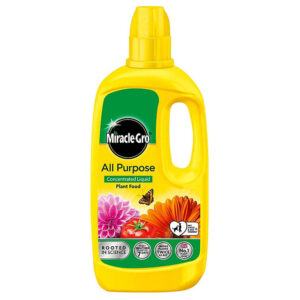Pain, whether chronic or acute, can significantly impact one’s quality of life. While medications are commonly used for pain management, there is growing interest in holistic approaches that address the whole person—mind, body, and spirit. These holistic methods not only aim to alleviate pain but also promote overall well-being and long-term health. Here, we explore various holistic approaches to pain relief that integrate lifestyle changes, alternative therapies, and mind-body techniques.
1. Mind-Body Techniques
Mind-body techniques focus on the interaction between the mind, emotions, and bodily functions. These approaches can help reduce pain perception and promote relaxation:
- Meditation and Mindfulness: Practices such as meditation and mindfulness can lower stress levels, which in turn may reduce pain intensity. These techniques encourage focused attention and acceptance of one’s physical sensations without judgment.
- Yoga and Tai Chi: Both yoga and Tai Chi combine gentle movements with deep breathing and meditation. They can improve flexibility, strength, and balance while also calming the mind and easing muscle tension.
- Biofeedback: This technique involves using sensors to monitor bodily functions like heart rate and muscle tension. Through visual or auditory feedback, individuals learn to control these functions, which can help manage pain.
2. Nutrition and Diet
Nutrition plays a crucial role in inflammation and pain management. A balanced diet rich in anti-inflammatory foods can support overall health and reduce pain:
- Anti-inflammatory Foods: Include foods like fatty fish (rich in omega-3 fatty acids), leafy greens, berries, nuts, and seeds. These foods can help reduce inflammation, which is often associated with chronic pain conditions.
- Herbal Remedies: Certain herbs and spices, such as turmeric (containing curcumin) and ginger, have natural anti-inflammatory properties. They can be incorporated into cooking or taken as supplements under guidance.
- Hydration: Proper hydration is essential for maintaining healthy joints and tissues. Drinking an adequate amount of water throughout the day supports overall bodily functions and can help alleviate pain symptoms.
3. Physical Therapy and Exercise
Physical activity and targeted exercises can improve mobility, strengthen muscles, and reduce pain:
- Strength Training: Exercises that strengthen muscles around joints can provide support and reduce pain in conditions like arthritis. A physical therapist can recommend safe and effective exercises tailored to individual needs.
- Cardiovascular Exercise: Activities such as walking, swimming, or cycling improve circulation, which can help alleviate pain and stiffness.
- Stretching and Flexibility Exercises: Stretching routines, including techniques like Pilates, can improve flexibility and reduce muscle tension, contributing to pain relief.
4. Alternative Therapies
Various alternative therapies can complement conventional treatments and offer additional pain relief options:
- Acupuncture: This ancient Chinese practice involves inserting thin needles into specific points on the body to stimulate nerves and promote natural pain relief mechanisms.
- Massage Therapy: Massage can help relax muscles, improve circulation, and reduce tension. Techniques such as Swedish massage or deep tissue massage can be beneficial for managing chronic pain.
- Chiropractic Care: Chiropractors focus on spinal adjustments and manipulations to alleviate pain and improve musculoskeletal function. This approach is commonly used for back and neck pain.
5. Cognitive Behavioral Therapy (CBT)
CBT focuses on changing negative thought patterns and behaviors that contribute to pain perception:
- Pain Coping Strategies: CBT teaches practical skills to manage pain, such as relaxation techniques, pacing activities, and setting realistic goals.
- Stress Management: Learning to identify and reduce stress can help decrease pain intensity and improve overall well-being.
6. Sleep and Rest
Quality sleep is essential for pain management and overall health:
- Sleep Hygiene: Establishing a bedtime routine, maintaining a comfortable sleep environment, and avoiding stimulants like caffeine can promote restful sleep.
- Pain Management at Night: Techniques such as using supportive pillows or mattresses and practicing relaxation exercises before bed can improve sleep quality and reduce nighttime pain.
7. Emotional and Social Support
Addressing emotional well-being and maintaining social connections can positively impact pain management:
- Support Networks: Engaging with friends, family, or support groups can provide emotional support and practical advice for coping with pain.
- Therapeutic Support: Counseling or therapy sessions can help individuals navigate the emotional challenges of living with chronic pain and develop resilience.
Conclusion
Holistic approaches to pain relief emphasize treating the whole person rather than just symptoms. By integrating lifestyle changes, alternative therapies, and mind-body techniques, individuals can manage pain more effectively while enhancing overall well-being. While these approaches may not replace conventional medical treatments, they can complement them and offer additional avenues for pain relief and improved quality of life.
Implementing holistic strategies requires personalized approaches and guidance from healthcare professionals. By taking a comprehensive approach to pain management, individuals can empower themselves to live fuller, more active lives despite chronic pain challenges.













